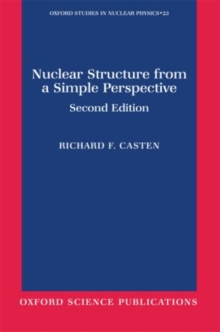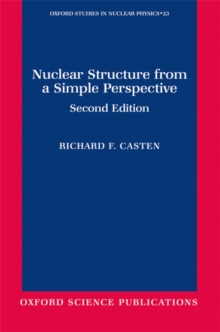
Interacting Boson Models of Nuclear Structure Hardback
by D. (Institute of Theoretical Physics, Institute of Theoretical Physics, University of Tubi Bonatsos
Part of the Oxford Studies in Nuclear Physics series
Hardback
- Information
Description
The fundamental model of nuclear structure is the shell model.
However, its application has been limited to light nuclei (up to the sd shell) or heavier nuclei with only a few valence nucleons outside closed shells.
Its application beyond these limits has been prohibited so far by the large scale of the calculations involved.
For the description of nuclei beyond the sd shell having several valence nucleons the introduction of collective models becomes necessary. The first comprehensive phenomenological model of nuclear structure was the geometric collective model of A.
Bohr and B.R. Mottelson. An alternative approach was proposed in 1974 by A. Arima and F. Iachello, known as the Interacting Boson Model. This model, which uses group theoretical techniques in the description of nuclear collective properties, has the advantage of relative simplicity, allowing for detailed calculations of the properties of even medium and heavy nuclei which cannot be reached by the shell model yet.
Several extensions and generalizations of the model have appeared over the last decade.
Algebraic descriptions for the effects of clustering, permanent octupole deformation, and giant resonances have also been given.
For the description of odd nuclei the Interacting Boson-Fermion Model has been introduced, and nuclear supersymmetries associated with it have been analysed. The present text is designed to provide physicists with an accessible introduction to the subject.
Information
-
Out of StockMore expected soonContact us for further information
- Format:Hardback
- Pages:332 pages, 67 line illustrations
- Publisher:Oxford University Press
- Publication Date:01/12/1988
- Category:
- ISBN:9780198517276
Information
-
Out of StockMore expected soonContact us for further information
- Format:Hardback
- Pages:332 pages, 67 line illustrations
- Publisher:Oxford University Press
- Publication Date:01/12/1988
- Category:
- ISBN:9780198517276



